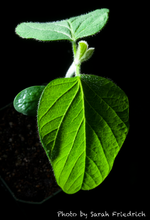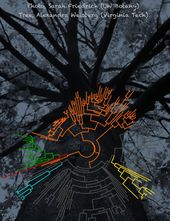Difference between revisions of "Maeda Lab:Publications"
From Maeda Lab
m |
|||
| Line 14: | Line 14: | ||
|-valign="top" | |-valign="top" | ||
|style="background:#ffffff"| | |style="background:#ffffff"| | ||
| − | <h3><font>Publications</font> ('''*'''corresponding author)</h3> '''[http://scholar.google.com/citations?user=uQBb60kAAAAJ Google Scholar citations]''' | + | <h3><font>Publications</font> ('''*'''corresponding author)</h3> '''[http://scholar.google.com/citations?user=uQBb60kAAAAJ Google Scholar citations]''' [[Image:soybean.png|right|150px|]] |
| − | <ol>[[Image:PlantCellcover.jpg|right|170px|]] | + | <ol> |
| + | <li>'''Schenck C.A.''', '''Chen S.''', Siehl D., '''Maeda H.A.*''' (2014) Non-plastidic, Tyrosine-Insensitive Prephenate Dehydrogenases from Legumes. [http://www.nature.com/nchembio/journal/vaop/ncurrent/full/nchembio.1693.html '''''Nature Chem. Biol. ''''' doi:10.1038/nchembio.1693] | ||
| + | :<font color="#404040"> ''L-Tyrosine (Tyr) and its plant-derived natural products are essential in both plants and humans. In plants, Tyr is generally assumed to be synthesized in the plastids via arogenate dehydrogenase (ADH) that is strictly inhibited by Tyr. Here we identified non-plastidic Tyr-insensitive prephenate dehydrogenases (PDHs) uniquely present in legumes, providing molecular evidence for the diversification of primary metabolic Tyr pathway via an alternative cytosolic PDH pathway in plants. Also, the Tyr-insensitive property of the identified PDH enzymes has immediate impacts on metabolic engineering to improve the production of Tyr and Tyr-derived natural products.'' </font> | ||
| + | |||
| + | [[Image:PlantCellcover.jpg|right|170px|]] | ||
<li>'''Dornfeld C.''', Weisberg A.J., Ritesh KC, Dudareva N., Jelesko J.G., '''Maeda H.A.*''' (2014) Phylobiochemical Characterization of Class-Ib Aspartate/Prephenate Aminotransferases Reveals Evolution of the Plant Arogenate Phenylalanine Pathway [http://www.plantcell.org/content/26/7/3101 '''''Plant Cell''''' 26, 3101-3114]</li> | <li>'''Dornfeld C.''', Weisberg A.J., Ritesh KC, Dudareva N., Jelesko J.G., '''Maeda H.A.*''' (2014) Phylobiochemical Characterization of Class-Ib Aspartate/Prephenate Aminotransferases Reveals Evolution of the Plant Arogenate Phenylalanine Pathway [http://www.plantcell.org/content/26/7/3101 '''''Plant Cell''''' 26, 3101-3114]</li> | ||
:<font color="#404040"> ''Plants use phenylalanine to produce abundant and diverse phenylpropanoid compounds, such as flavonoids, tannins, and lignin. Through phylogenetic, bioinformatic, and biochemical analyses of prephenate aminotransferase enzymes from plant and bacterial lineages, this study revealed unique evolutionary history and molecular changes of key enzymes responsible for phenylalanine biosynthesis in plants. The findings assist the rational design of antimicrobial drugs and herbicides, but also highlight the use of phylobiochemical characterization of enzymes from deep taxonomic lineages in determining key molecular changes that lead to the evolution of new metabolic pathways.'' </font> [http://www.news.wisc.edu/23041 UW news release]. | :<font color="#404040"> ''Plants use phenylalanine to produce abundant and diverse phenylpropanoid compounds, such as flavonoids, tannins, and lignin. Through phylogenetic, bioinformatic, and biochemical analyses of prephenate aminotransferase enzymes from plant and bacterial lineages, this study revealed unique evolutionary history and molecular changes of key enzymes responsible for phenylalanine biosynthesis in plants. The findings assist the rational design of antimicrobial drugs and herbicides, but also highlight the use of phylobiochemical characterization of enzymes from deep taxonomic lineages in determining key molecular changes that lead to the evolution of new metabolic pathways.'' </font> [http://www.news.wisc.edu/23041 UW news release]. | ||
Revision as of 20:43, 17 November 2014
Publications (*corresponding author)Google Scholar citations
|


